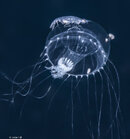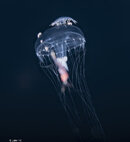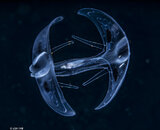It is a shot of a mermaid, it is worth all of the effortFILM? Do they still make film? Wow! That's got to be a lot of work. I'm impressed!
You are using an out of date browser. It may not display this or other websites correctly.
You should upgrade or use an alternative browser.
You should upgrade or use an alternative browser.
Photography Thread Revival
- Thread starter Jonnyola87
- Start date
-
- Tags
- photography
Please register or login
Welcome to ScubaBoard, the world's largest scuba diving community. Registration is not required to read the forums, but we encourage you to join. Joining has its benefits and enables you to participate in the discussions.
Benefits of registering include
- Ability to post and comment on topics and discussions.
- A Free photo gallery to share your dive photos with the world.
- You can make this box go away
Absolutely, they do! In fact, there is a bit of a film revival, or renaissance, happening. I, myself, have never strayed.FILM? Do they still make film? ...
Dig out your old film camera, send it out for a CLA, and have at it!
rx7diver
Absolutely, they do! In fact, there is a bit of a film revival, or renaissance, happening. I, myself, have never strayed.
Dig out your old film camera, send it out for a CLA, and have at it!
rx7diver
Funny that you mention it, I was watching a YT video about this "revival" few hours ago. There are also people into taking pictures with Polaroid cameras. There is a "subculture" around these technologies going on these days.
I think I have some undeveloped 35mm film laying around. I wonder what's on those rolls. And some of those little bitty camera rolls too - maybe from the 90's? I think I'm too spoiled by the digital stuff. I think of my grandma saying "Why in the world would people want to plant a garden when they can buy green beans in a can?"!Absolutely, they do! In fact, there is a bit of a film revival, or renaissance, happening. I, myself, have never strayed.
Dig out your old film camera, send it out for a CLA, and have at it!
rx7diver
I do admire the dedication to doing things old school though. And I wonder if it's like listening to vinyl - digital doesn't provide the same experience.
It's like the audiophile hipsters with their affinity for vinyl records. Except film actually is warmer and richer, and is also far less forgiving. It requires you to develop skills, and does not support the 1 in 100 ethos.Funny that you mention it, I was watching a YT video about this "revival" few hours ago. There are also people into taking pictures with Polaroid cameras. There is a "subculture" around these technologies going on these days.
I have not shot film underwater - in fact, the last time I shot film was over twenty years ago, using a Zenit-E camera - but from what I've been told by a veteran underwater photographer, using film underwater with flash involved using set formulas for exposure and distance, which severely limited compositional choices. In practice, the ability to shoot, review, adjust and shoot again gives you opportunities to take shots that you wouldn't attempt with film.It's like the audiophile hipsters with their affinity for vinyl records. Except film actually is warmer and richer, and is also far less forgiving. It requires you to develop skills, and does not support the 1 in 100 ethos.
How do you use it? Do you put it down in front of a crawling nudibranch and wait for it to get on, or do you gently pick it up with a muck stick or something and set it down on the disc? Is it difficult to keep free of scratches?I use a scrying mirror, a polished black obsidian disc.
My question exactly.How do you use it? Do you put it down in front of a crawling nudibranch and wait for it to get on, or do you gently pick it up with a muck stick or something and set it down on the disc? Is it difficult to keep free of scratches?
So black water dives are a very specific type of night, drift dive in deep water. I did one with Pura Vida Divers, out of Singer Island Florida. We headed out about 4 miles to the Gulf Stream The dive was executed within 40 feet of the surface, in ocean depth of about 750 feet. Over the course of an hour, the untethered divers were carried over 5 ½ miles by the subsurface current. The dive op drops a float in the water, with a beacon at about 30 feet. That's your reference point for staying in touch with the group. The larval critters rise up to feed at night, and are illuminated by the beacon and divers' lights. The best strategy for photographers is to use red lights so as not to scare aware the critter you want to shoot. Focus can be an issue because of the low light and the diaphanous nature of the larvae.
The payoff was the capture of images such as the following of a larval jelly fish with an arthropod hitch hiker on the top of its bell. The jelly fish measured roughly an inch across. Many of the larva resemble alien space ships in miniature. Perhaps they are?
The payoff was the capture of images such as the following of a larval jelly fish with an arthropod hitch hiker on the top of its bell. The jelly fish measured roughly an inch across. Many of the larva resemble alien space ships in miniature. Perhaps they are?
Attachments
I sweep the subject from the substrate with my hand, never touching it. I then catch it with the stage (scrying mirror) and wait for it to crawl into a good position. I hold the stage with my port resting on the palm of my hand to avoid camera movement, lift it above my eye level to get a black background, then gently shake the subject off the stage back where I found it. I never touch it with my gloves or a stick. Sometimes, such as in the case of a spiny lumpsucker, I let it land on the stage while it's swimming.How do you use it? Do you put it down in front of a crawling nudibranch and wait for it to get on, or do you gently pick it up with a muck stick or something and set it down on the disc? Is it difficult to keep free of scratches?
Similar threads
- Replies
- 26
- Views
- 2,394
- Replies
- 16
- Views
- 2,172
- Replies
- 1
- Views
- 974






